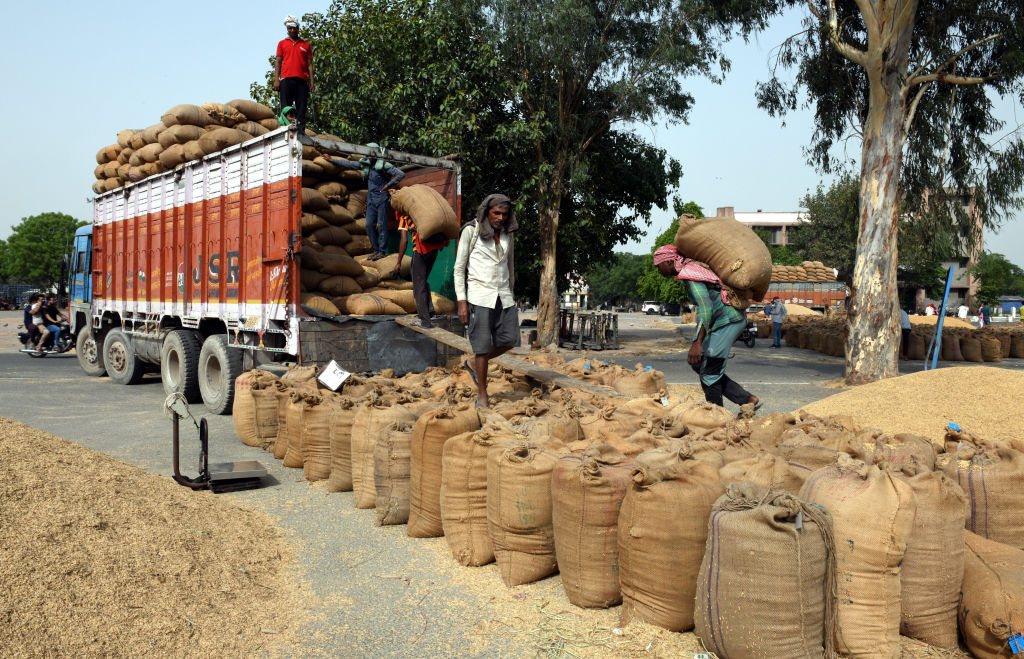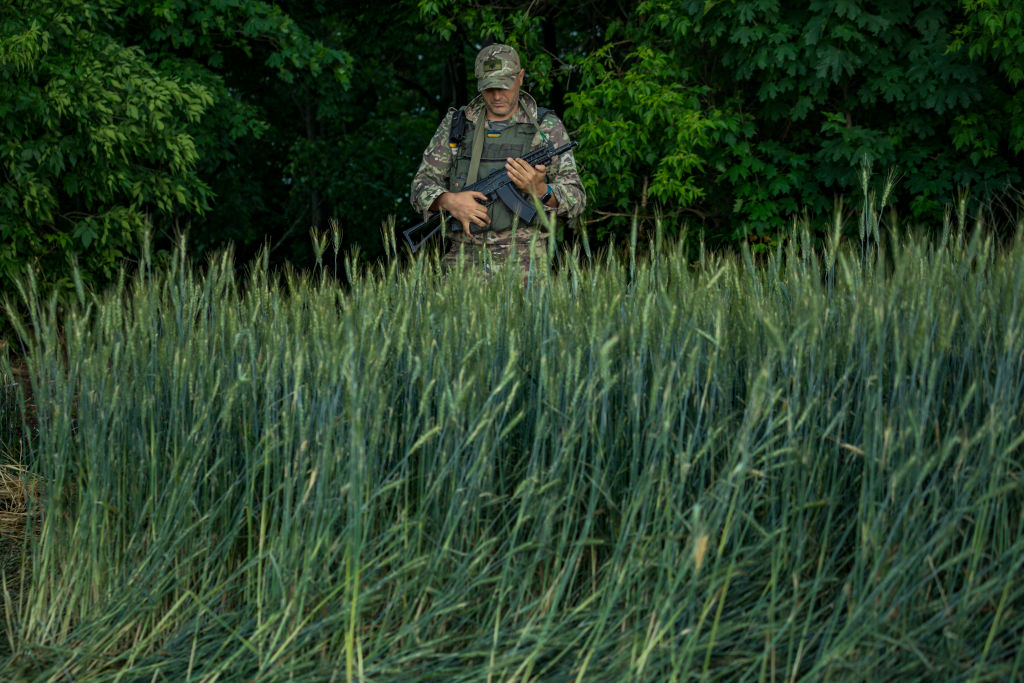We have enough food to feed everyone. Cereal production has slightly dipped, but is still higher than recent years, based on United Nations’ Food and Agriculture Organization data. We are also producing more meat and dairy products compared to last year. Yet the world is looking at an emerging food crisis. Millions of people are already experiencing poverty because of soaring food prices, and as of July 12, at least 19 countries have imposed export restrictions on agricultural goods in the hope of staving off hunger.
As of June 30, wheat prices were up 42% compared to January 2021, according to the World Bank. Maize prices have risen 47% over the same period. Most countries are seeing food inflation of more than 5%, and governments are responding by trying to insulate themselves from these shocks and arrest domestic inflation by restricting exports.
Supply chain disruptions caused by COVID-19 are also partly responsible for pushing up food prices. So is the Russia-Ukraine war. Ukraine is a major producer of some of the world’s most vital crops—wheat, corn, and sunflower—and the conflict has virtually cut off its links to the global food supply.
Read More: The Food Crisis Can’t Handle Ukraine War And Climate Change
Soaring food prices after Russia’s invasion of Ukraine have plunged some 71.5 million more people into poverty, according to a July estimate from the United Nations Development Programme. Many of them are in the countries in sub-Saharan Africa, the Balkans, and the Caspian Basin, where some economies, unable to grow their own food, rely solely on humanitarian rations.
Weather shocks only exacerbate these problems, says David Laborde, a senior research fellow at Washington-based International Food Policy Research Institute (IFPRI). “We have strong evidence that it’s also linked to climate change and global warming,” Laborde tells TIME.
Rising export curbs are a case in point. Malaysia in May put restrictions on exports of its chicken products as hens, on top of facing a grain feed shortage, tend to produce fewer eggs in extremely hot weather. The recent wheat export ban by India—the world’s second largest producer—came after a heatwave in March and April slashed yields. (The grain is sensitive to high temperatures and yields a lot less.)

Several studies forecast the same alarming trend for global food security: crop yield will continue to decline as the planet warms. Hence experts believe that as climate change worsens, not only will we see more of these export bans, but also a rearrangement of trading patterns between countries as they prioritize national interest. Climate change increases the risks to food production and distribution, so countries will move toward more regional and “mini-lateral” trade agreements to offset any potential damage from disruptions, says Alex Capri, a researcher at the Hinrich Foundation, a Singapore-based philanthropic organization that supports sustainable global trade. “Climate change is absolutely driving nationalistic behavior.”
Economies will be inclined to source important goods from neighboring countries rather than from across continents, even if the latter is cheaper. It’s already happening, Capri says, pointing out that “mini-lateral” agreements between strategic and geopolitical allies could be more efficient at solving domestic food crises. The United Arab Emirates, for example, last month said India will export wheat again but for the Emiratis’ consumption only. The two already have an existing trade pact that cuts tariffs on all goods to increase their annual trade to $100 billion within five years.
The multiplier effect of export bans
The world has experienced similar clampdowns on food trade in past crises. Many countries enforced export restrictions on staples to ensure domestic supply in 2008 amid an oil shock, amid other disruptions that caused a food crisis. Over a billion people were plunged into poverty after trade restrictions pushed world rice prices up by nearly 150% that year.
The costs of imposing such measures are steep. While these curbs may control domestic prices in the short run, farmers are less incentivized to invest in agriculture, which, in turn, affects national food security and jacks up the cost of food.
Today, the situation is far worse. In the weeks that followed Russia’s invasion of Ukraine, data from the IFPRI showed an increase in food export restrictions, with at least 23 nations having issued either outright export bans or curbed export licensing by mid-July. Some countries, such as Indonesia, were forced to ease export restrictions only after protests by farmers and small-scale producers.
Read more: Climate Change Is Likely to Devastate the Global Food Supply. But There’s Still Reason to Be Hopeful
Crops are increasingly being impacted in a warming world, with more frequent heat waves, drought and extreme flooding. Laborde points out that governments don’t always give aid to farmers badly hit by weather and climate shocks, which risks pushing them into bankruptcy.
“We really need more to have governments supporting the farmers and the food system rather than trying to basically punish farmers to protect consumers,” he tells TIME.
Lower food stock brought on by weather shocks is more sensitive to price fluctuations than before, too. “[If] we had the same kind of crisis five years ago, the market would have reacted differently,” Laborde said, pointing out that since climate change is now constantly slashing crop yields around the world, governments have far less buffer than before.
Solving the food price crisis
In response to the increasingly protectionist food trade measures by national governments, in June ministers of 164 nations of the World Trade Organization (WTO) agreed to ease the flow of food across global markets and remove export restrictions for emergency food aid. WTO Director General Ngozi Okonjo-Iweala says the agreement will help make food and agriculture trade “more predictable” amid “the worst food security crisis in decades.”
The member countries vowed not to impose restrictions on foodstuffs purchased by the World Food Programme in order to ensure humanitarian food aid supplies. They also promised to notify the WTO of any export restrictions they plan to impose.

While the WTO agreement is seen by many as historic, it’s still only a promise, as the organization has no enforcement mechanism for those who fail to follow the rules. Daniel Esty, professor of environmental law and policy at Yale University, says the WTO Secretariat isn’t positioned to do much more than convene the countries. “It’s really up to the national governments to step up and ensure that there is free trade broadly…and that there is a flow of food, in particular to the countries most in need of it,” he tells TIME.
One criticism of the recent WTO agreement is that it benefits countries with big agriculture and food companies, but not small- and medium- food producers. Corinna Hawkes, director of the Center for Food Policy at City, University of London, says one solution would be to diversify voices in food trade policy. The private sector influences national leaders’ decision making for food systems, but Hawkes says she believes inviting those who are directly hit by the crisis into the decision making process—small-scale farmers, women, and the youth—will result in more inclusive solutions.
Whether it’s tackling racial, gender, economic, or other social inequalities, “communities can find solutions that work for them if they are given the opportunity to co-design those solutions,” she tells TIME.
The future of the global trading system
As geopolitics and climate change push nations to source their food supplies closer to home, there might be unintended environmental benefits.
Grain exporters like India and the United States use up massive amounts of freshwater to grow enough crops to be able to export to the rest of the world. But crops that are locally produced or sourced from neighboring countries, when cultivated with climate-resilient technologies, such as precision agriculture, use less of this valuable resource. Shorter export distances also mean less fuel usage for transport. Shorter supply chains increase access to stakeholders like farmers and consumers and lead to shared sustainability efforts as well.
Read more: The Ukraine Crisis Shows How Fragile Our Food Systems Are
This shift toward regional trade pacts, however, doesn’t mean the end of globalization, say some experts. Instead, Hawkes believes globalization and international trade are simply transitioning to a new phase, with countries trying harder to diversify their food sources, including the indigenous ones, for greater security.
“It appears to be deglobalization—in a way it is,” says Hawkes. “But increasingly trade is about not just trading goods, but trading services… finance… data. So, countries will still be making use of these forms of globalization, in producing food in their own countries.”
More Must-Reads From TIME
- The 100 Most Influential People of 2024
- Coco Gauff Is Playing for Herself Now
- Scenes From Pro-Palestinian Encampments Across U.S. Universities
- 6 Compliments That Land Every Time
- If You're Dating Right Now , You're Brave: Column
- The AI That Could Heal a Divided Internet
- Fallout Is a Brilliant Model for the Future of Video Game Adaptations
- Want Weekly Recs on What to Watch, Read, and More? Sign Up for Worth Your Time
Contact us at letters@time.com